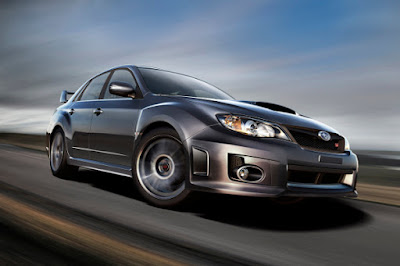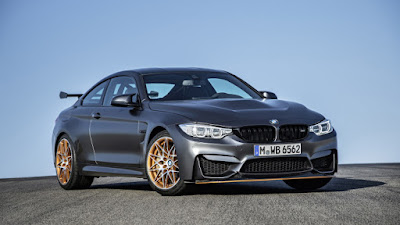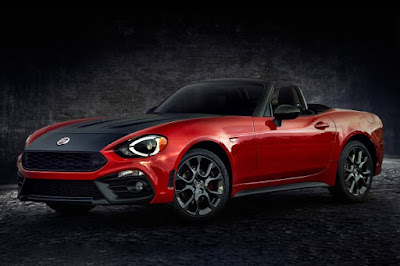2016 BMW M4 GTS
Water injection helps it give drivers a dry mouth.
First Drive Review
About three-fifths of your body mass is water, the important thing to life. Scientists scour the reaches on the universe for the liquid form hoping that where they find water there could possibly be other life. BMW found some life in water, too, squirting the stuff into your intake plenum on the M4 GTS’s S55 twin-turbo inline six-cylinder engine to produce more power.
It isn’t just water injection that produces the GTS special. This is the latest inside a long brand of hopped-up M cars which are never bought from the U.S. before this, beginning from the E30 M3 Evolution and quite a few recently the E92 M3 GTS, which packed a 4.4-liter V-8. Water injection isn’t a whole new technology, even for production cars. More than half a century ago, General Motors offered a water-injected turbocharged engine in their 1962–63 Oldsmobile Jetfire. If you never got word of that one, it’s probably as most were changed to use conventional carburetors following secondary injector system dried out when owners didn’t refill the tank of “Turbo-Rocket” fluid, as GM called its methyl-water cocktail.
Water injection is an excellent means of cooling the intake control of a boosted engine. In the short path through the air filter, with the turbos, on the dual-cam cylinder head, and over the air-to-liquid intercooler, the compressed air can reach temperatures greater than 212 degrees. According to Jürgen Poggel, M GmbH’s head of engine development, injecting liquid water in the hot chamber cools the intake charge by about 77 degrees in the majority of circumstances. In the most extreme cases, he admits that, it could cut heat into a temperate 120 or 140 degrees.
Any liquid, the way it transitions at a liquid state to your gaseous state, can perform this magic. The evaporation process converts some in the unwanted heat into harmless humidity. Lowering the intake temperature prevents engine knock as well as the unwanted detonation of fuel, looked after allows the turbos to provide more boost—21.6 psi versus 17.2 inside regular M4—and also the electronics to advance the timing. The result in this instance is a 49-hp bump on the 444-hp Competition Package M4, to 493 horsepower.
BMW may have injected E85 (or perhaps alcohol-water mix like GM did) sticking with the same, or even even more improved performance, but that, Poggel says, would modify the emissions. BMW didn’t want a motor that could ever be from tailpipe compliance if your secondary tank ran dry, just like a diesel running without urea. (We’re curious to find out what tuners including Dinan might think of.) Additional water vapor inside the combustion chamber does not even attempt to emissions since there is nothing combustible in mineral water. Run water tank dry as well as the engine reverts to 444-hp tune. On a racetrack, the 1.3-gallon tank below the spine floor will empty at roughly precisely the same rate since the 15.9-gallon fuel tank. Water injection is active only above 5000 rpm and under full load, so street drivers will have to rehydrate less often, perhaps every fifth or sixth fuel fill-up, dependant upon driving style. It is unclear if dealerships will stock distilled “factory-spec” water which has a BMW part number.
To lessen the chance of corrosion as well as prevent water from freezing, the lake lines are drained each time the engine shuts. The system primes in seconds upon startup, prior to the driver really should be calling for 5000 rpm under full force on a cold engine.
By here, you’ve probably glanced with the specifications, seen the six-figure price, and wondered, “What the hell, on an M4?” While the basic shell in the M4 is unchanged, BMW exchanged many components in search of track performance, costly bits that push the value to twice that in the base M4.
Carbon-ceramic brake rotors; a carbon-fiber hood, roof, strut brace, driveshaft, rear wing, front splitter, and rear bulkhead; and lightweight interior trim borrowed through the i3, are standard minimizing weight. These help cancel out the 22 pounds of mass added for the stream-injection system. All the GTS cars for that U.S. offer an orange-painted, four-point roll cage in place on the usual back seat. U.S.-spec cars won’t contain the ultra-lightweight carbon-fiber seats observed in these pictures; instead we’ll have a lighter-than-normal sport seat with manual adjustments. The result is really a car that weighs about a similar as a regular M4 fitted with all the dual-clutch automatic transmission (really the only gearbox to the GTS), or 3550 pounds.
There’s more magic inside chassis. BMW chose meaty Michelin Pilot Sport Cup 2 tires, 265/35ZR-19 beforehand and 285/30ZR-20 with the spine, to wrangle the gut-punch torque along with the rest in the chassis alterations in step. The basic suspension setup, struts in front which has a rigidly mounted rear subframe carrying a multilink suspension as well as an electronically controlled limited-slip differential with the spine, remains, but three-way adjustable dampers with external reservoirs and adjustable spring perches (they're able to lower the auto by 0.8 inch for track duty) are engaged here. The extra grip with the Cup 2s also required a difference to the engine: The sump carries an added quart of motor oil to stop oil starvation in high-g maneuvers.
With any additional power and grip, we expect the GTS to own the quarter-mile in 11.5 seconds. Drivers will likely do a large amount of these sprints in order to hear the engine at full tilt, given it sounds being a feral beast. BMW cites 493 horsepower and 443 lb-ft of twist, but it really feels a lot more 550 of every. And purists, rejoice! No artificial soundtrack pumps over the speakers here. All sounds are 100-percent pure inline-six.
We only sampled the automobile on a racetrack, while using suspension lowered accordingly, which enable it to say that the GTS makes your average car seem like overcooked pasta when compared. Flat-foot the gas on corner exit along with the tail drifts just a bit in a very predictable, manageable way. The GTS is just as legitimate a track car each and every GT Porsche, Camaro Z/28, or Mustang Shelby GT350R. Looking for evidence? Check out the video below, which shows the GTS managing a 7:27.9 lap in the Nürburgring Nordschleife, quicker than those of a Ferrari 458 Italia.
The Cup 2s help enliven the M4 steering with legitimate feedback coming over the suede-wrapped leader, something lacking within the current generation of M3/M4. We’d prefer a larger brake pedal, or perhaps a little more spacing between your brake and throttle pedals, to produce left-foot braking easier. BMW claims the aero package, together with the front splitter manually extended 2.4 inches to its track position along with the rear wing from the most aggressive attitude of three, generates 63 pounds of downforce about the front axle and 210 within the rear at 186 mph.
With a small run of 700 GTSs worldwide and 300 dog-eared with the United States, this special M4 is usually exclusive. BMW says its dealers already have spoken for all with the cars which buyer vetting has started. The automaker doesn't have worries about its capability to sell every M4 GTS and expects most to use as they were intended, as dedicated track cars that don’t should be trailered for the paddock.




